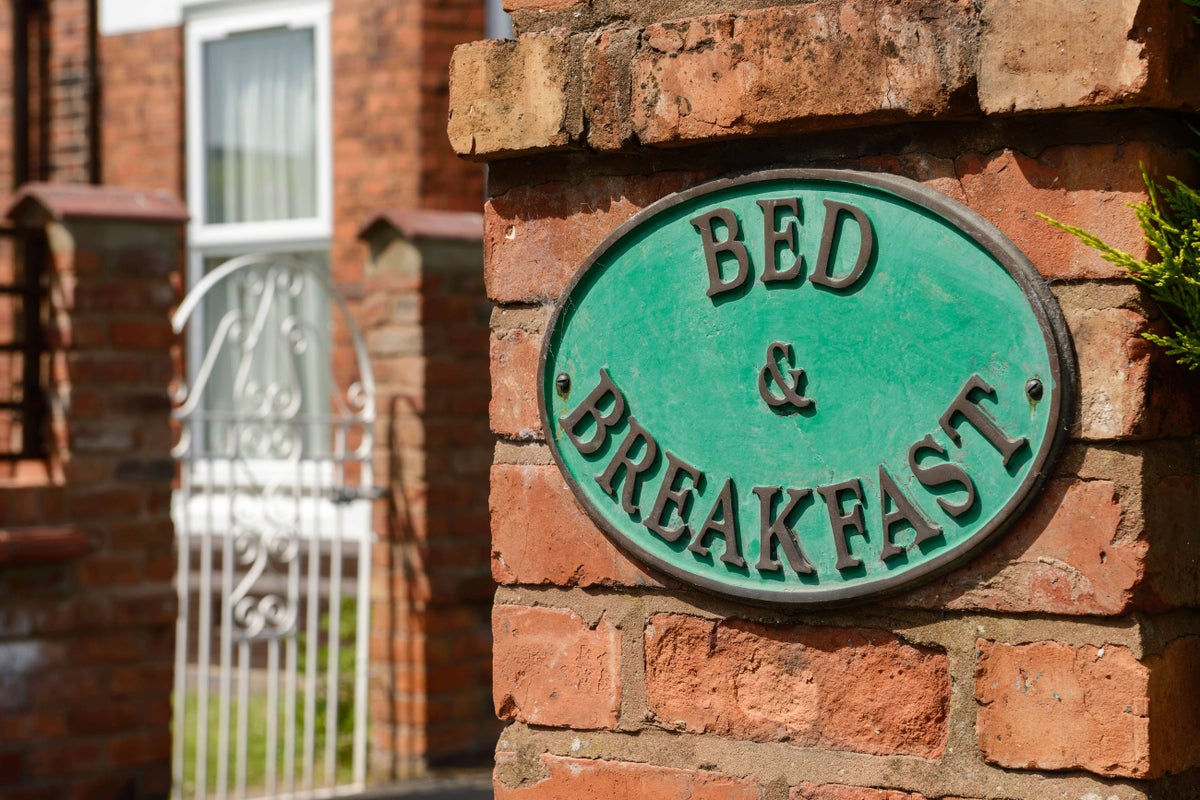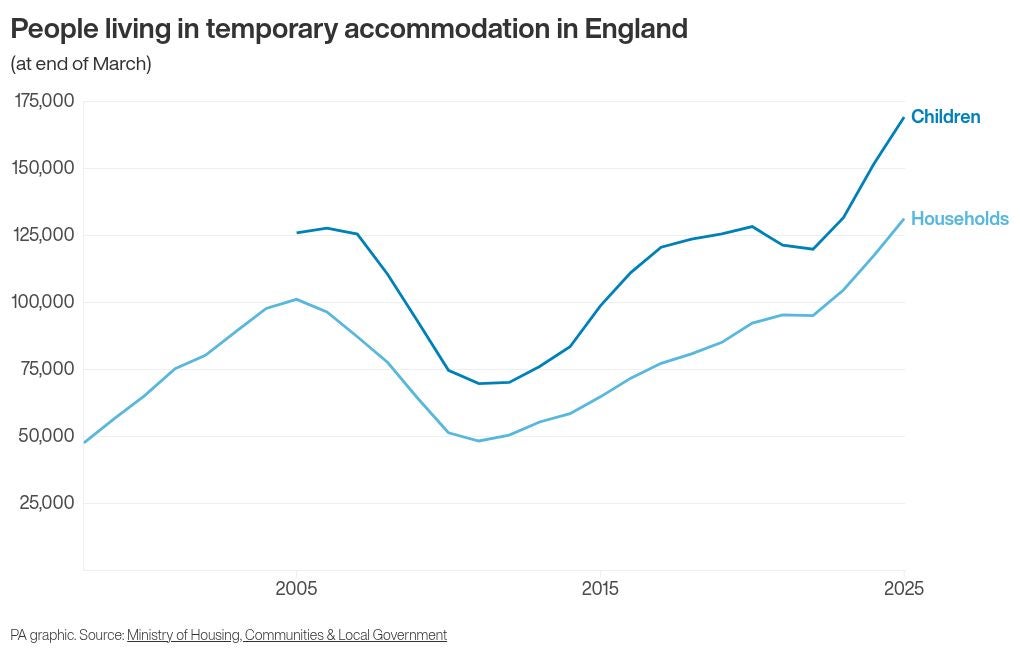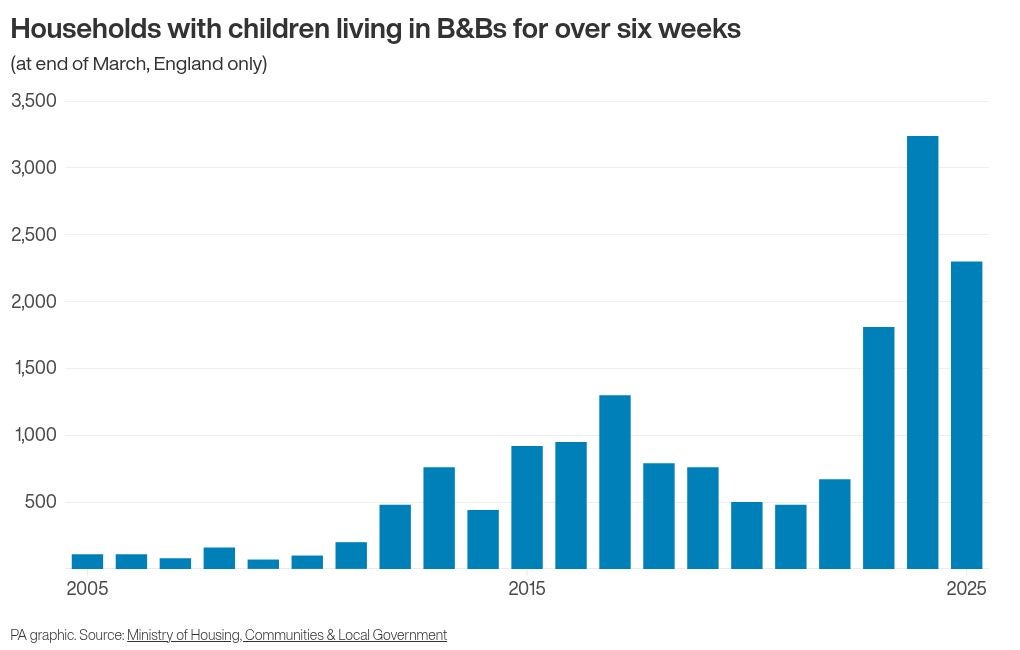
The number of households in temporary accommodation in England has climbed to a new record high, despite a drop in families living in bed and breakfast lodgings.
Some 131,140 households were in temporary accommodation – a form of homelessness – at the end of March, according to data published by the Ministry of Housing, Communities & Local Government (MHCLG).
This is up from 117,350 a year earlier and is more than double the total a decade ago in March 2015, when it stood at 64,710.
The number of children in temporary accommodation stood at 169,050 in March, up year on year from 151,540 and also the highest since records began in 1998.

By law, bed and breakfasts (B&Bs) are meant to be used only as temporary accommodation in an emergency and for no longer than six weeks.
Some 2,300 households with children had been living in B&Bs for more than six weeks as of March 31 – though this is down from 3,240 a year earlier.
There were 1,170 households with children who had been in B&Bs for more than six months at the end of March, up slightly year on year (1,080) but down on December 2024 (1,510).

John Glenton, executive director at the charity Riverside, which provides accommodation for people affected by homelessness, said the numbers were “greatly concerning”.
He added: “It is particularly disappointing to see the number of additional homeless children living in temporary accommodation continuing to increase so rapidly, with 17,510 more children year on year.
“However, the number of homeless households moved out of temporary accommodation into social housing has increased by almost an eighth over the past 12 months compared to the previous year.
“We know moving families out of temporary accommodation and into a social rent home works.
“We are pleased to see the Government fund the delivery of 180,000 new social rent homes, but there are also opportunities to better use the existing stock of social housing.”
The data also shows 18,140 households needed help for homelessness in the year to March after being required to leave Home Office asylum support accommodation, more than three times the 6,010 in the previous 12 months.
The number of these households at risk of homelessness and therefore needing prevention help from councils stood at 4,620 in 2024/25, up from 2,160 in 2023/24.
A further 13,520 of these households were assessed as being already homeless and therefore owed a relief duty from the local council, up from 3,850 in the previous year.
Mairi MacRae, director of campaigns and policy at the housing charity Shelter, said: ”While their classmates are excited for the holidays ahead, over 169,000 children face a long summer stuck in damaging and insecure temporary accommodation.
“This is the devastating result of a severe shortage of social rent homes and inadequate levels of housing benefit that continue to trap families in homelessness.
“As an immediate relief for struggling families, the Government must unfreeze local housing allowance in the autumn budget, so it covers at least the bottom third of local rents.
“But there’s only one way to ensure everyone has access to a safe and secure home in the long run, and that’s social rent homes.”







